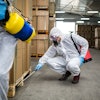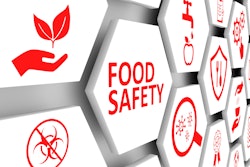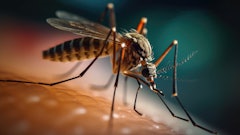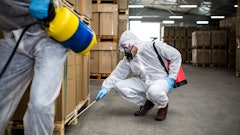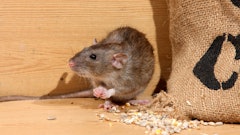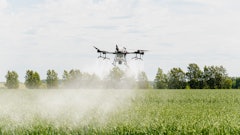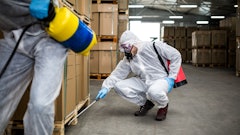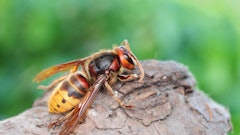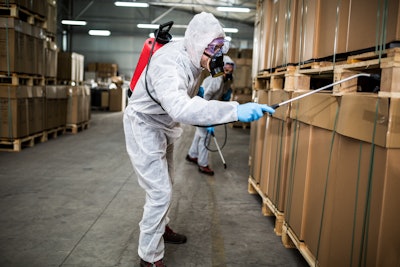
The winter season can serve as an open invitation into business for pests that don’t go dormant during the colder months. These critters will be searching for food and shelter and your building will look good to them. Supply chain facilities can be a weak link where pests can contaminate goods.
Here are the most problematic pests threatening to put a kink in your food and supply chain during this time of year.
Rodents. Rats and mice enter a facility seeking a warm place to spend the winter. However, once inside, they not only seek to gnaw on trash and leftovers but also electrical wiring. Along with the danger of possibly sparking a fire, these pests bring health-related threats. They are associated with numerous potentially serious health hazards, including typhus, food poisoning and hantavirus. Rodents can contaminate products through droppings and other biohazardous body wastes. As a result, they are capable spreading diseases to employees and customers.
Cockroaches. These stubborn pests thrive in heated buildings during the winter where they have constant access to food, water and shelter. Oriental cockroaches enter by crawling through gaps or openings in the foundation. American cockroaches follow sewage lines and plumbing into boiler rooms or utility rooms. And German cockroaches can hitch a free ride inside through shipments, bags, and even clothing. Not only can they potentially contaminate your supply chain, but they can also possibly carry and transmit diseases to workers or customers. If you spot a cockroach, there’s a chance there are many more hiding nearby.
Birds. A songbird in your garden is a pleasant experience, but pest birds inside your facility is quite the opposite. Birds like pigeons, house sparrows and starlings bring health risks. These species may carry a variety of pathogens that can be transferred to humans and products. For example, dust from dried-out bird feathers and droppings, carrying pathogens, could be inhaled. In addition, bird mites are known to flee birds and birds’ nests into occupied areas of buildings. To deter birds from roosting or nesting, keep overhead doors closed at all times when not in use, and seal or repair broken windows, unscreened exhaust fans and rooflines so birds cannot penetrate them.
Ants. Pavement ants and odorous house ants are two species that may establish colonies under foundations or slabs year-round. As a result, they sometimes appear inside structures even in the wintertime when other insects are not active. When ants are seen indoors in the winter, it will most likely be near sources of heat and moisture. These could be where plumbing and utilities penetrate slabs. Expansion joints in slabs are often entry points into buildings for ants as well. It is important to eliminate food and beverage spills, denying the ants nutrition and discouraging their activity.
Flies. There are two major groups of pest flies that can affect facilities – small organic breeding flies and filth flies. Fruit flies, drain flies and phorid flies are in the first group. These flies establish populations within the facility. They breed in such unsanitary places as floor drains, septic soil beneath slabs, sewage ejector pits and sumps. Uncontrolled, they will be a perpetual problem. House flies and blow flies are among the filth flies. They are definitely more numerous in the summer but are known to be active in the late winter or early spring. They normally live and breed outside in excrement, garbage or animal carcasses. But if they enter the facility, they can potentially bring copious amounts of pathogens with them.
Fortunately there are many steps to help prevent pests from threatening the cold food chain.
1. Identify popular pest areas early. Pests are going to be drawn inside the business during the cold months due to the lure of food, warmth and shelter. If you can identify the key areas they will gravitate to ahead of time, you can address them before pests are introduced. Common hotspots include storage rooms, delivery areas, utility rooms, break rooms and trash areas.
2. Look for evidence. Once you’ve identified the areas that pests are likely to set up shop, monitor these areas frequently for activity. Look for damage to packaging and food, droppings and obvious entry points. For example, fruit or phorid flies inside a wrapped pallet suggest that either they are being wrapped into the pallets by employees, or were delivered already “wrapped in.” You can begin seeking root causes from one of those two plausible scenarios. Regardless, if you notice anything, log it immediately. Ask your pest management provider for tips on training your staff to monitor for these signs of pest activity.
3. Seal any openings. Pests love to sneak into buildings through cracks and gaps. Cockroaches, ants, flies and spiders are especially skilled at entering this way. To help prevent them from gaining entrance, it’s important to do an assessment of your siding and foundation and repair where needed. Seal any gaps between doors and windows with caulk, ensure weather stripping is in place and undamaged and replace any damaged screens in windows. Having door sweeps installed and closing doors when not in use is also key for pest-proofing.
4. Clean and sanitize. It may seem simple but keeping the facility clean is one of best ways to help prevent pests from seeking refuge in your business during the winter. Clean up spills and crumbs as soon as possible. Keep storage areas and utility closets clean and tidy and avoid unnecessary clutter (particularly cardboard) that could be used as a pest hiding spot. Instruct employees not to consume food or leave food wrappers and bags in operational areas. Clear your drains of buildup that can attract small flies and ensure all trash cans are sealed with a tightly fitting lid.
5. Deal with smells. There are good smells and then there are bad. Even if you clean and sanitize, the latter may naturally occur near and around trash areas and dumpsters. There are scenting units that can help with that. Neutralize the smells or add a pleasant scent. It will make the air easier to breathe and better for you and your employees.
With staff training, diligent maintenance, cleaning practices and the help of a pest management provider, you can help keep your facility pest-free during the winter months and every season after.



